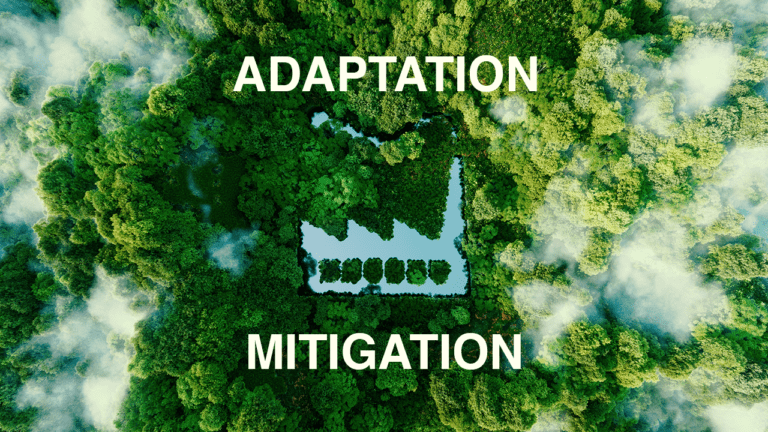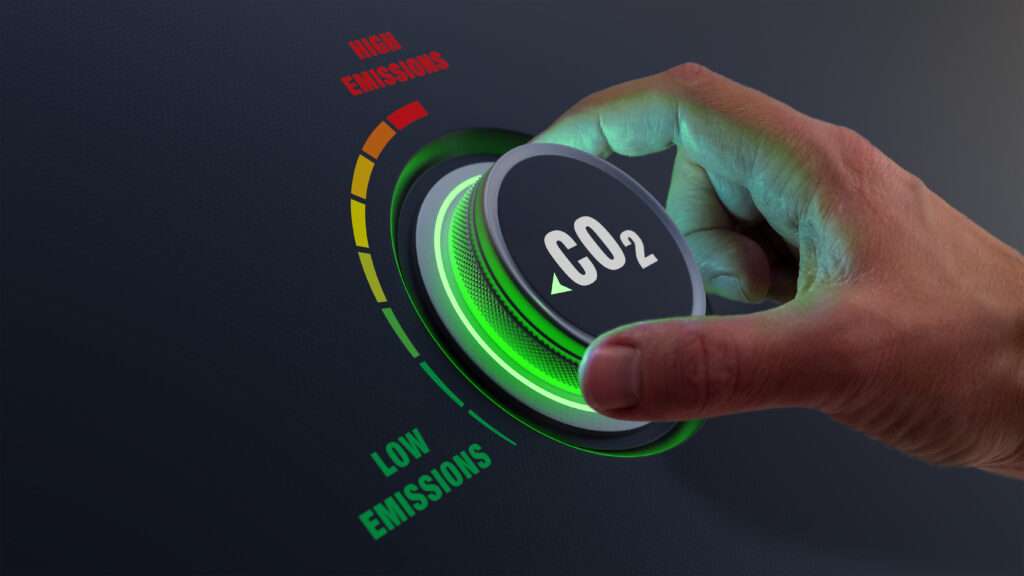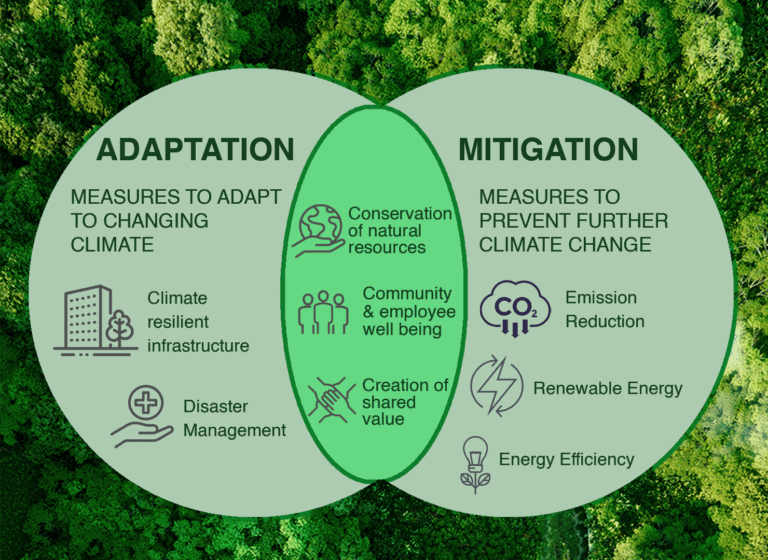
The ongoing climate change is already making a noticeable impact on our daily lives.
Along with governmental actors and financial institutions, businesses have been preparing to address climate change issues.
When creating a sustainability strategy to address this issue, businesses may come across two different terms: climate change adaptation and mitigation. There are two aspects of climate change issues all sectors must consider in their response:
1. Changed climate patterns and damage already done which we must adapt to. (Adaptation)
2. Potential worsening of climate change in the future which we must prevent. (Mitigation)
Both problems are equally important to ensure long term survival.

In fact, the World Economic Forum’s 2022 Global Risks Report identifies “failure of governments and businesses to enforce, enact and invest in effective climate change adaptation and mitigation measures” as a major risk.
Thus, all sectors including businesses must use a dual approach that combines both adaptation and mitigation to address climate change.
Let us look closer at what adaptation and mitigation entail.
What is climate change adaptation?
Adaptation involves adjusting to present climate conditions as well as expected conditions in the future. Its main objective is to manage risks or potential disasters arising from imminent change in climate while ensuring continued operation of the business.
Businesses should carefully assess and identify potential risks unique to their organizations and plan on how to address these risks. For example, there could be an operational risk or threat to well-being of employees due to significant change in temperatures. The organization could accordingly build climate resilience systems or infrastructure to address such risks.

What is climate change mitigation?
Mitigation involves preventing further climate change by dramatically reducing carbon footprint. Successful mitigation can be achieved by:
– Reducing GHG emissions through reengineered processes and efficient technologies.
– Enhancing natural carbon sinks such as forest which help store carbon

– Investing in renewable energy as an alternative to fossil fuels
– Using carbon capture and sequestration systems
– Increased energy efficiency

A dual approach
In a business’s sustainability strategy, both adaptation and mitigation measures begin complementing each other overtime.

This dual approach provides the following benefits and opportunities for a business organization:
– Cost reduction
– Liability management
– Building climate resilience
– Conservation of natural resources
– Increased efficiency and competitiveness in the market
– Opportunities to enter new markets
– Creation of shared value with stakeholders
– Good corporate citizenship
Horizon has invested in both adaptation and mitigation measures to address climate change. As a result, some of Horizon’s accomplishments include, among others, outperforming EU 2020 Climate and Energy Targets in 2020. It was also awarded Contributor of the Year in 2021 for improving Environmental, economic, and social well-being of local community of Harjumaa in Estonia.
Horizon has outlined a clear path towards meeting EU 2030 Climate and Energy Targets. It has already met most of the targets and is on track to meet remaining targets before 2030.
References:
World Economic Forum (2022) The Global Risks Report 2022, 17th Edition, Cologny/Geneva: World Economic Forum. Link: https://www3.weforum.org/docs/WEF_The_Global_Risks_Report_2022.pdf (Accessed: 15 November, 2022).
NASA (2022) Responding to Climate Change, Available at: https://climate.nasa.gov/solutions/adaptation-mitigation/ (Accessed: 15 November, 2022).
United Nations Global Compact and United Nations Environment Programme in cooperation with the CEO Water Mandate (2022) Business and Climate Change Adaptation: Toward Resilient Companies and Communities (Caring for Climate Report), UN Global Compact and UN Environment Programme. Available at: https://www.iccr.org/sites/default/files/resources_attachments/businessandclimatechangeadaptation.pdf (Accessed: 15 November, 2022).
